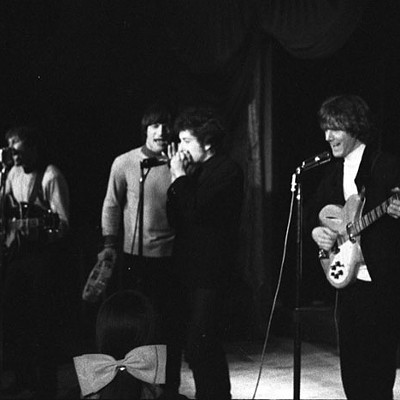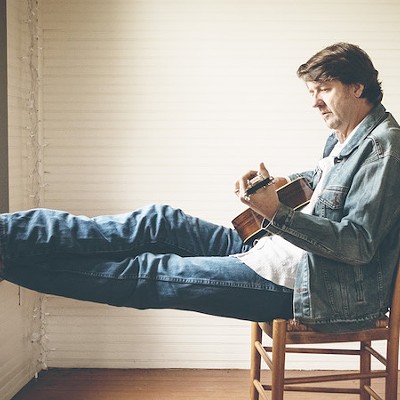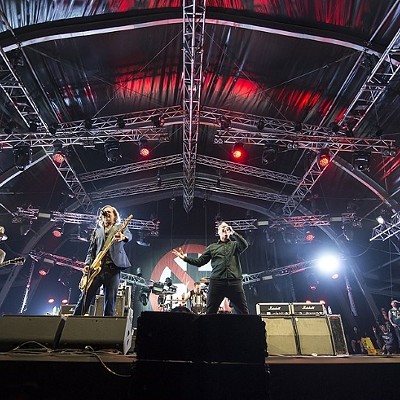Some things never change. For a few years when I was younger, "fuck emos" was a battle cry among fans of "real punk" or "real music," who hated the wave of emo in popular music and as a lifestyle of teenagers across America. Now, in some ways, that sentiment seems to be back again.
Not only was I a self-described emo kid, but I still wave the flag proudly while the revival currently takes place in the underground led by bands like Touche Amore (playing Fitz tonight) and La Dispute. The funny thing is though, even if people did hate emos, even if they still do with the current revival, they lost the war a long time ago.
Emo has infiltrated our modern lifestyles in so many ways, whether some people like it or not. Here are five of the most important ways that emo changed popular music and the world at large.
5. Fashion Look around you. You may not see people decked out in the full classic emo gear, with piercings and hair swept over their eyes, but you'll probably see some subtle reflections of the emo style that still proliferate in fashion today.
You'll see people wearing "vintage T-shirts," with logos of outdated TV shows and companies on them. You'll see skinny jeans, maybe even a studded belt or two. Furthermore, horn-rim black glasses, cardigans and V-necks, and even short-sleeve plaid button-ups are all remnants of the emo style's entry into the mainstream.
4. Indie-Rock and Folk What the hell is indie-rock anyway? Well, indie-rock as a general sound is hard to pin down, but both "classic" examples like Archers of Loaf or Pavement or modern groups such as Cloud Nothings or the Men aren't vastly different from classic '90s emo.
Compare any of those bands to Sunny Day Real Estate or the Promise Ring. There are distinct similarities, and the genres evolved alongside each other, completely intertwined. Even today, most indie-rock owes a heavy debt to the first few waves of emo.
As for folk? The entire damn folk revival basically spawned off of emo, when emo kids decided to start playing acoustic guitars. Check out what Bright Eyes' Conor Oberst was up to before he decided to go all Americana.
3. Lyrical Content Before emo, much of the lyrical content in mainstream and underground music alike was lacking a certain emotional honesty. That's not true of all music or all rock bands, but take a look at the rock music of the '70s and '80s, which was heavy on sex, masculinity and a strange obsession with the occult.
Punk, of course, wiped most of that out, but even it had a hard streak of revolution and bravado. It wasn't until emo split off of punk that it started to be acceptable to talk about your feelings with such distinct openness. Today it's the norm, but emo was one of the first genres to break down the hyper-masculinity and brashness of almost all music and admit the flaws that used to remain hidden.
List continues on the next page.
2. Pop-Rock The past decade has been a really weird one for pop and rock music in general, but no doubt that emo has had a huge bearing on it. It's wrong for the most part to call what My Chemical Romance or Fall Out Boy did emo; those bands mostly had little to do with the purest origins of the genre. Yet they were still indebted to it in their own ways.
Now their influence lives on in much of the mainstream rock and pop music we hear today. Even Fall Out Boy is back on top melding their own distinct sound with pop music, but without emo and hardcore, they would have never existed in the first place. In this small way, emo still proliferates in the mainstream arena.
1. Straight Edge Straight edge as a movement emerged in the exact same vein as emo. In fact, it was invented by the same guy who basically invented emo: Ian MacKaye of Minor Threat and Fugazi. As movements, the two are intrinsically linked; one would have probably never existed without the other.
Today, straight edge as a movement still exists and is alive and well throughout even the mainstream. Take a look at former WWE champion CM Punk, a huge proponent of straight edge as a lifestyle. It just goes to show the way these movements have inspired and influenced generations of listeners since their beginnings in the mid-'80s.
ROCKS OFF'S GREATEST HITS
The Ask Willie D Archives Top 10 Bars, Clubs & Ice Houses In Montrose Top 10 Bars, Clubs & Ice Houses in Greater Heights Houston's 10 Hottest Female Singers
Follow @hprocksoff





